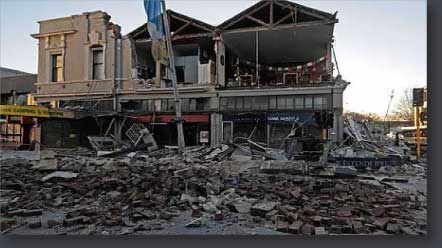The Insurance Industry was put under an intense spotlight throughout
2011 and early 2012 with the natural disasters that hit Australia and
New Zealand. We assisted numbers of brokers and their corporate clients with their claims. We saw many instances where business clients were grateful for the insurance cover that their broker had arranged. In many cases the business insurance cover was critical to the business' survival and the relationship between client and broker was strengthened by the assistance provided by us and the broker. This part of the story has not received much media space.
A lot of the media coverage focused on the negative by concentrating on individual cases and statistics, for example, the Financial Ombudsman Service (FOS) receiving over 700 disputes concerning the Queensland floods, Cyclone Yasi and the New South Wales and Victorian floods. There was little context reported in terms of total number of claims and the total amount paid out in claims for these disasters. There is no doubt
communication was an issue for the Insurance Industry as a whole and not enough of the 'good' done by the Industry was effectively communicated.
Nonetheless, there is also little doubt that lessons were learned by Insurers, Insureds and Brokers. From the hundreds of claims that we dealt with and from FOS and other industry research we have noted the following key points that can be referenced for improvement or can be used as lessons that may be applied to other policies. Some are simple issues that apply to on-going risks and hopefully can be simply addressed in renewal or new business reviews:
a) Inaccuracies in cover - Broker's Policy Schedule not matching Underwriter's Policy Schedule documentation and/or Broker (file
documentation) not reflecting cover requested. No FactFinder or Needs Analysis on file. Brokers not highlighting relevant exclusions.
b) Flood Definition (and any different Flood definitions) being clearly explained and understood e.g. 'escaped and/or released' versus 'overflow'
c) If Multiple Insureds are on same policy at the same location and
'sharing' any one location Section 1 sub-limits, this should be clearly explained. Different 'entities' 'sharing' sub-limits can create difficulties especially if the combined entities total loss is more than the sub-limit.
E.g. a ROD sub-limit of $100,000 will need to cover the combined total ROD for all entities at the one location – they will not have a ROD sub-limit of $100,000 each.
d) If Insured has multiple locations on an ISR, the words "For Underwriting Purposes Only" need to be clearly noted if Section 2 values by location are listed. When "For Underwriting Purposes Only" has not been noted we have seen discussion on whether Insureds are under-insured at a location where a claim is incurred based on those location by location values. This is despite many insureds believing that they had only listed these amounts to assist in underwriting purposes such as calculating the allocation of premium and statutory charges.
e) No Machinery breakdown cover and no Deterioration of Stock (DOS) cover when it is needed. This lack of cover can create problems and lead to disputes over whether claims are Accidental Damage or Machinery Breakdown / DOS coverage issues. E.g. Restaurants, Cafes, Pubs, Clubs.
f) Confusion or poor understanding of Business Package Additional
Benefits. E.g. No damage issues for Utilities cover, Prevention of access cover etc. Client not understanding BI cover. These covers should be clearly explained.
g) If clients have Instant Profits policies checking whether flood cover is excluded especially if their Property Damage insurance cover includes cover for flood damage.
h) Indemnity Periods - With Business Interruption insurance, specifying an adequate indemnity period that suits the specific individual business is critical. 24 months or more may be more appropriate for some businesses than a 12 month indemnity period. A good starting point is questioning what is the time-frame to
re-build.
i) Sub-limits issue (wording and amount), e.g. Total sub- limit for ISR and
Business Packs Section 1 Cover and Section 2 Cover too low and specific sub-limit amounts too low or not included, such as: |







